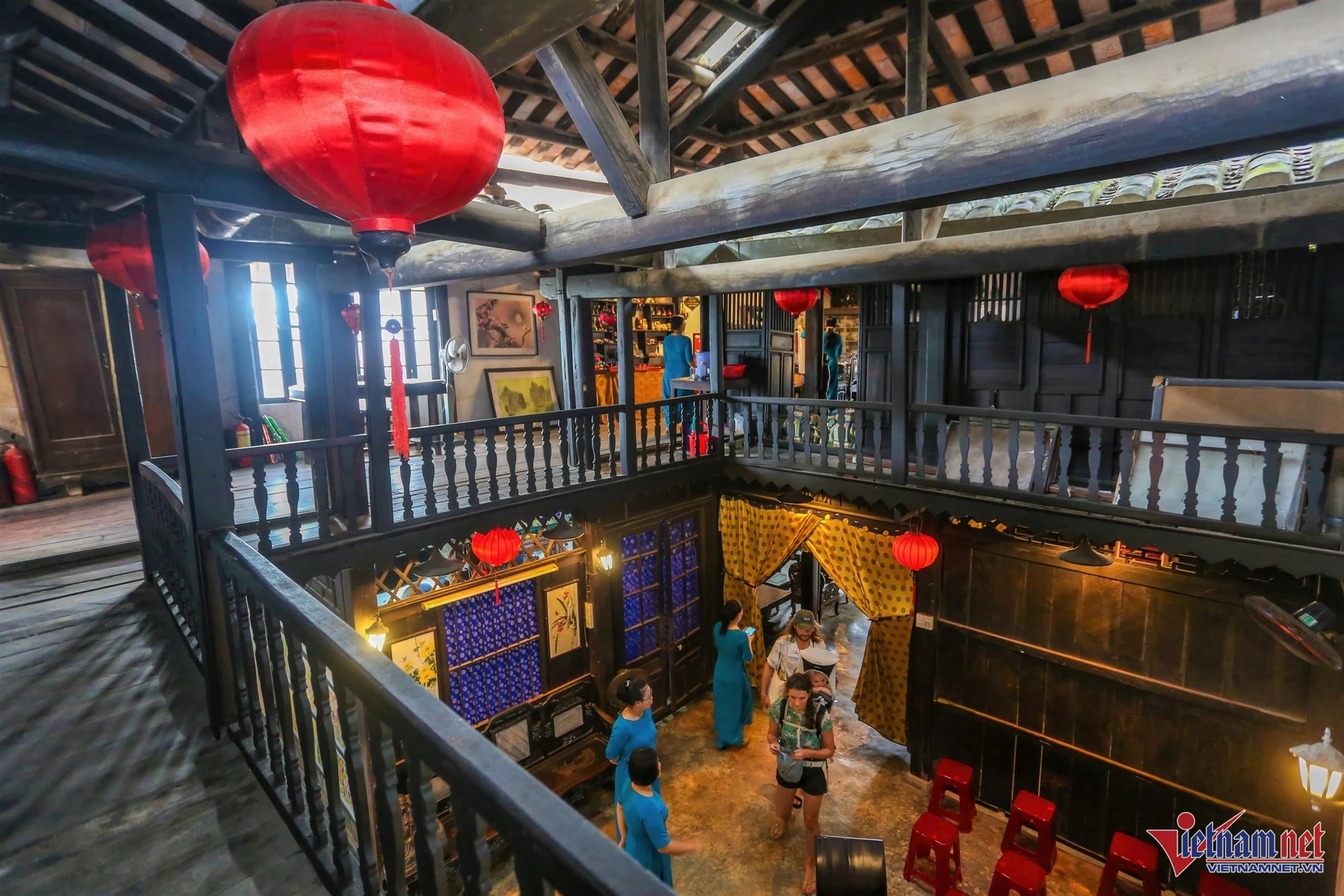244-year-old Phung Hung ancient house attracts the most customers in Hoi An
Phung Hung ancient house is tubular, 2 floors, with a spacious façade, located on Nguyen Thi Minh Khai Street (Hoi An City), next to Cau Pagoda. This work was built by a Vietnamese merchant in 1780. He named the house Phung Hung, also the name of the merchant, which means prosperous and prosperous business. In ancient times, the house was a place to sell forest and local products such as cinnamon, pepper, salt, silk, ceramics, and glass,... The current owner is the 8th generation descendant, living and preserving the ancient house. The architecture of the house is a combination of 3 cultures: Japanese, Chinese and Vietnamese. Balconies and doors in bold Chinese colors. The middle roof is designed in the style of "four seas", which means four tanks and one house according to the ancient Japanese tradition. Traditional wooden ribs, crossbars, vertical beams, and two-way traditional roofs in the front and back pavilions in Vietnamese style. In particular, all 80 oars are made of ironwood and placed on extremely solid stone feet. Many beams and wooden beams are elaborately and exquisitely carved. Above the main door there are 2 door eyes (divine gate). The eyes of the door are both decorations and spiritual elements to guard the house, avoiding bad things The frame and floor are made of ironwood and jackfruit, the grate walls are made of bricks and the roof is covered with yin and yang tiles. The living room is quite spacious and has a set of mother-of-pearl mosaic tables and chairs that are more than 200 years old. The walls of the house are decorated with many delicate carvings. Entering the inner compartment must pass through a middle door, above which there is a diaphragm "The Duc Liu Quang", which means that the virtues of the ancestors shine through. On both sides of the door are pairs of ancient couplets. There is a square door (hatch) connecting the 1st floor to the 2nd floor, used to transfer goods to the upper floor when there is a flood. This is also a relic of the architectural arts and lifestyle of the ancient Hoi An merchant class, as well as a testament to the cultural intersection in Hoi An when it was a prosperous trading port The innermost compartment is the residence of the family. During the historic flood in 1964, this place became a safe haven for about 100 people for 3 days and nights. The outer room of the 2nd floor is a place of worship and family activities. The door to the veranda on the 2nd floor is made in the upper and lower way, the upper and lower are made of closed wood, bringing discreet but still airy. The house owns a prime "façade" location, located next to Cau Pagoda. Going through many ups and downs, up to now, the house has retained almost intact architectural and interior lines. Phung Hung Ancient House is one of the unique destinations that tourists cannot miss when visiting Hoi An. Source: VNN

























